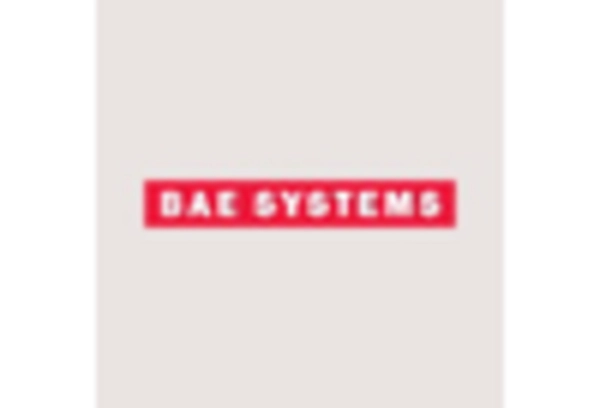Market Analysis
In-depth Analysis of Naval Communication Market Industry Landscape
Operating at the nexus of maritime innovation and strength in warfare, the naval communication industry is essential to maintaining efficient coordination and communication for naval forces across the globe. The dynamics of the market in naval communication, an essential part of naval infrastructure, are influenced by a number of factors that reflect the changing landscape of maritime safety and technical improvements. The increasing degree of complexity of maritime operations is one of the factors propelling the market for naval communication. Smooth and secure communication networks are essential for contemporary naval missions because they enable real-time cooperation, information sharing, and decision-making processes. The market's need for cutting-edge communication technologies is being driven by the increasing requirement for interoperability among various naval platforms, such as ships, submarines, and planes. One major factor driving the trends within the naval communication industry is technological innovation. Advanced naval communication systems are developed through advances in data encryption, RF (radio frequency) technology, and satellite communication. These systems' characteristics are further improved by the integration of machine learning and artificial intelligence, giving naval troops smart communication options that can adjust to changing operating circumstances. The trends of the naval communication sector are also significantly shaped by geopolitical factors. Nations are investing in effective communication skills for their naval forces due to maritime-related instability in the region, and the necessity of a strategic naval presence. The market reacts to the need for safe, dependable means of communication that can handle the difficulties presented by various geopolitical circumstances as nations work to express their marine interests. The naval communication industry has additional aspects due to the emergence of asymmetrical threats and digital warfare. The increased dependence of naval forces on digital communication technologies increases their susceptibility to cyberattacks. This calls for the creation of robust and secure communication systems that can fend off cyberattacks and guarantee the confidentiality of important naval data. Another element affecting the naval communication industry is interconnectedness with ally and combined forces. For cooperation and cooperative defense efforts, naval communication systems must seamlessly connect with those from different military branches and foreign partners. The need for means of communication that can enable effective collaboration among heterogeneous naval forces is fueled in part by coalition building, international operations, and joint drills. The dynamics of the naval communication industry are also influenced by developments in defense expenditures and budgetary constraints. Resources are distributed by nations according to plans for fleet advancement, anticipated marine threats, and overall defense goals. The market landscape is shaped by events such as changing security concerns, geopolitical developments, and economic reasons that impact investments in naval communication systems. The market dynamics for naval communication are further heightened by the growing significance of unmanned naval systems. For naval surveillance, autonomous aerial vehicles (AAVs), underwater drones, and unmanned surface boats (USVs) all depend on sophisticated communication networks to function properly. The need for communication systems that can meet the particular needs of autonomous platforms is being driven by the eventual incorporation of the aforementioned unmanned machines into naval forces. In summary, the market for naval communication functions in a constantly changing landscape that is influenced by the dynamic nature of maritime safety, technical breakthroughs, geopolitical factors, and the requirement for efficient cooperation amongst naval forces. To face the problems presented by modern naval operations, it is imperative that sophisticated communication technologies be continuously developed. With creativity and flexibility at its foundation, the marketplace structure of naval communication are bound to change as states fight for maritime dominance and respond to new threats.

















Leave a Comment